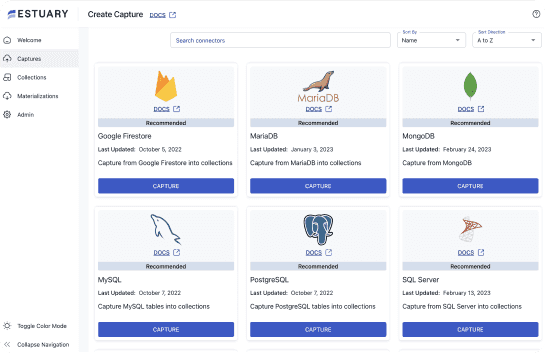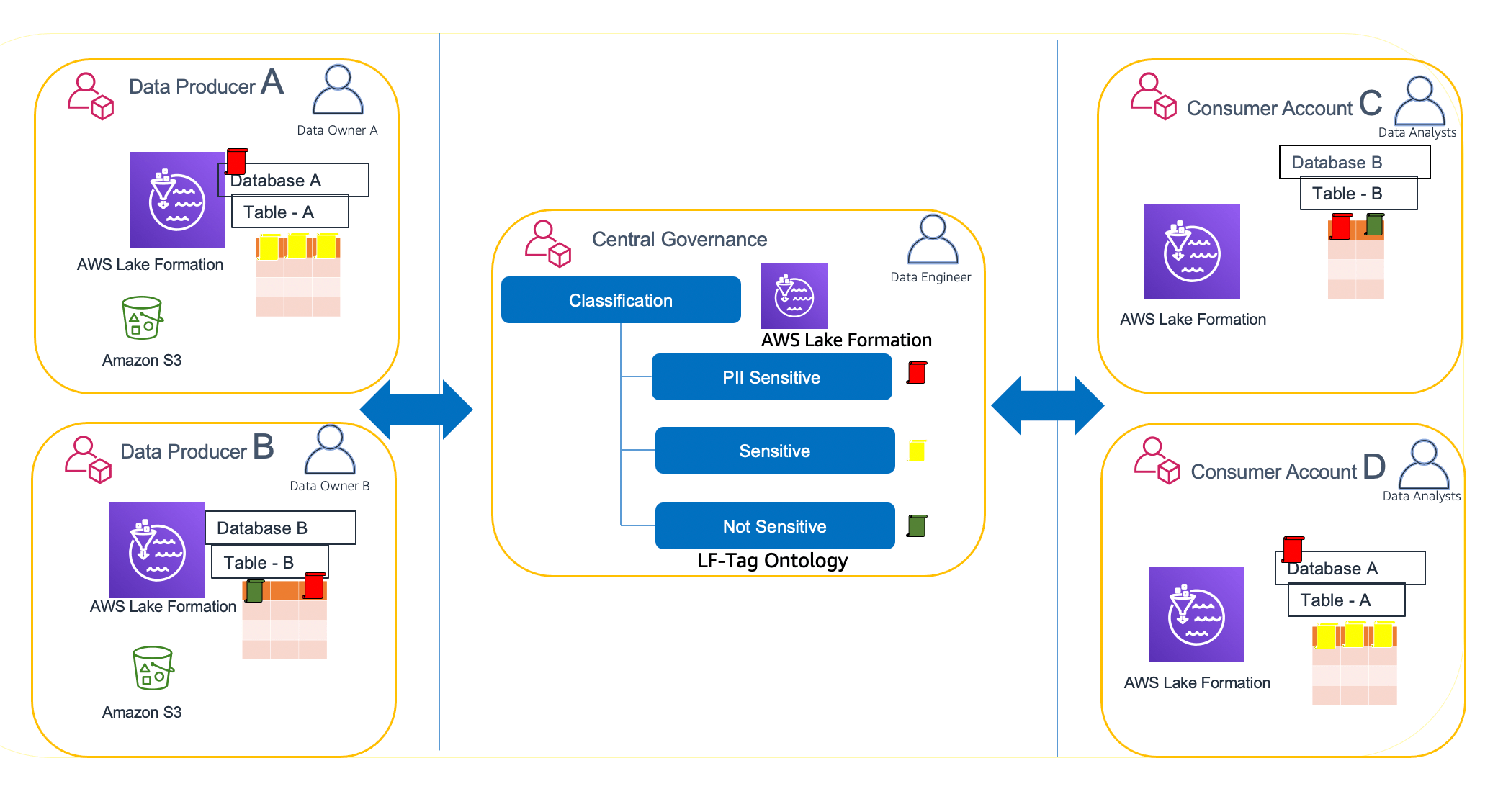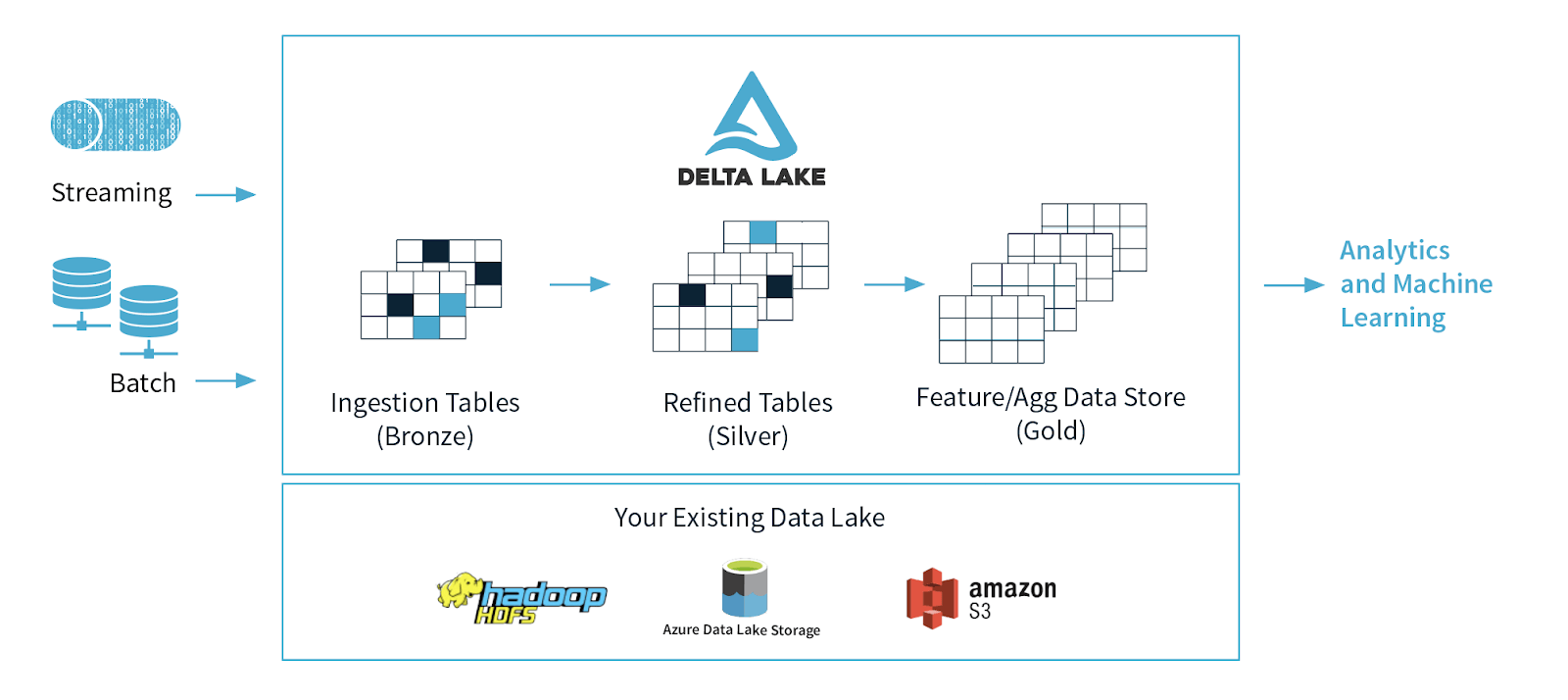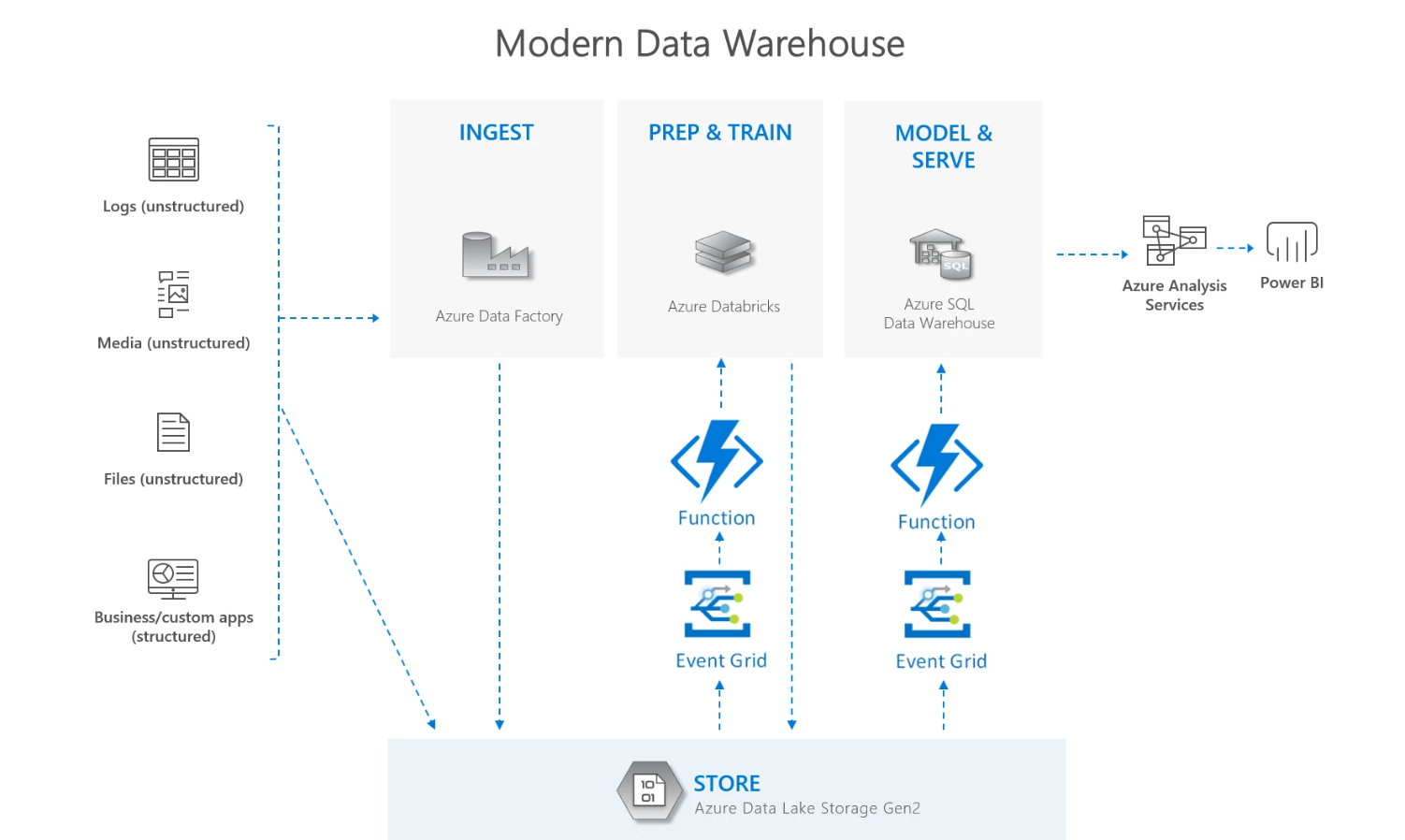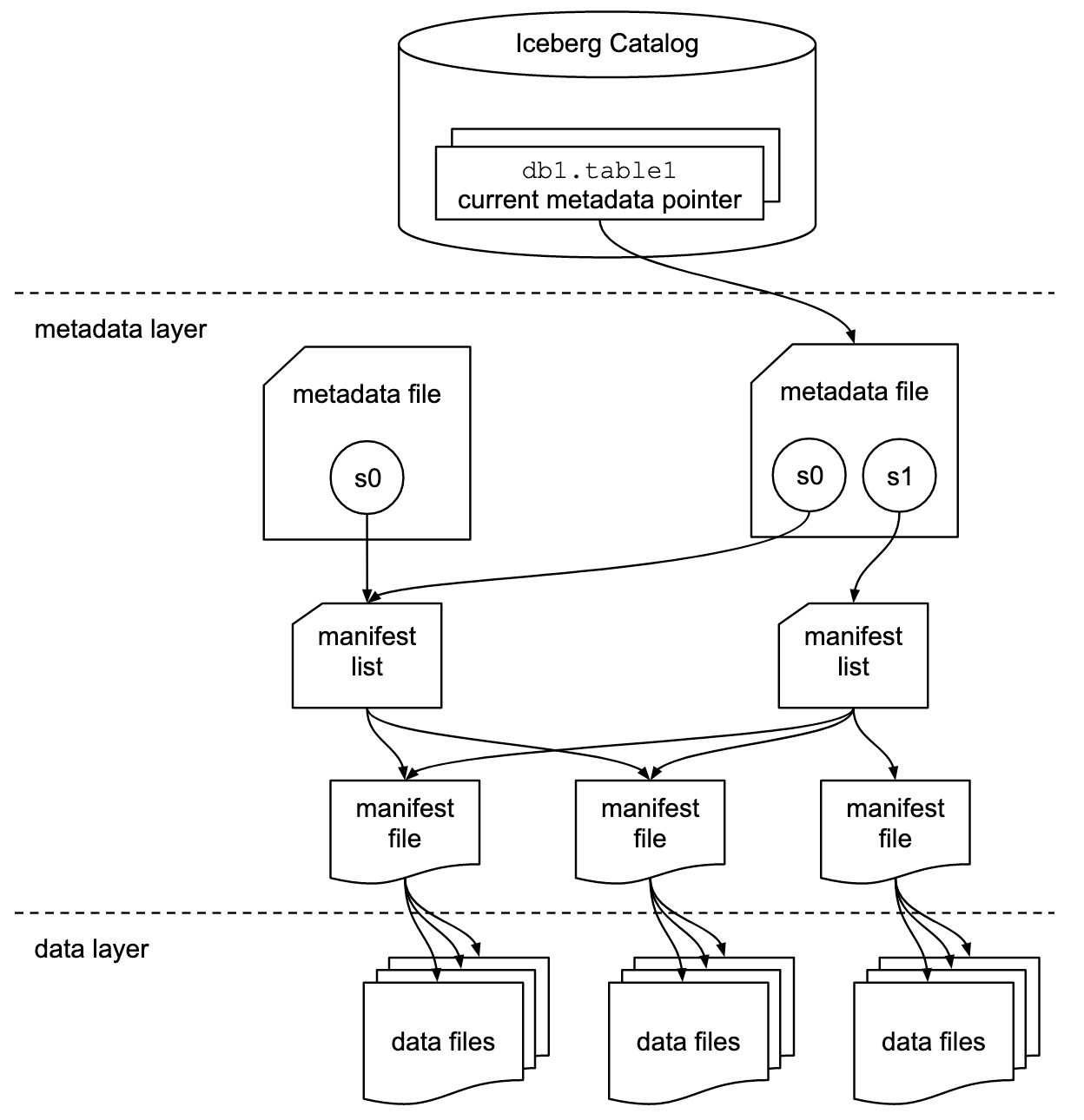
Data lakes are the backbone of modern data infrastructure — flexible, scalable storage environments designed to handle massive volumes of raw data from diverse sources. Whether structured, semi-structured, or unstructured, this data can be stored without rigid schemas, making data lakes especially valuable for real-time processing, machine learning, and advanced analytics use cases.
Historically, data lakes served as low-cost storage for raw data that would eventually be transformed and loaded into data warehouses for business analysis. But today, the landscape is shifting. Newer data lake tools and platforms have introduced robust capabilities for governance, schema management, and performance optimization, blurring the line between lakes and warehouses.
This evolution has given rise to what many refer to as the “lakehouse” — a hybrid architecture that combines the scalability of a data lake platform with the query performance and structure of a data warehouse. Technologies like Delta Lake, Iceberg, and BigLake are leading this trend, and they’re supported by an ecosystem of modern data lake vendors, both in the cloud and open-source communities.
As a result, teams no longer need to choose between agility and structure. With the right data lake tool, it's possible to store, process, and analyze data — all in one place. And when combined with real-time ingestion platforms like Estuary, these tools unlock always-fresh analytics, faster pipelines, and simpler infrastructure.
In this guide, we’ll explore some of the top data lake tools available today. From cloud-native services to open-source technologies, we’ll break down each tool’s unique strengths, so you can choose the right foundation for your modern data stack.
Top Data Lake Tools for Modern Analytics in 2025
These top data lake tools support real-time ingestion, advanced analytics, and lakehouse architectures — all in one place.
1. Amazon S3 & AWS Lake Formation
Amazon Simple Storage Service (S3) with AWS Lake Formation is AWS’s flagship data lake solution. S3 provides virtually unlimited object storage with high durability and availability, while Lake Formation builds on it to make it straightforward to set up a secure, governed data lake in days
Key Features:
- Scalable Storage: Store petabytes of structured or unstructured data on S3 with 99.999999999% durability and low-latency access. Pay-as-you-go pricing makes it cost-effective for any scale.
- Built-in Security & Governance: Lake Formation simplifies configuring fine-grained access control and encryption for data in S3. It integrates with AWS IAM and AWS Glue Data Catalog to manage permissions and metadata centrally.
- Integration with Analytics Services: AWS seamlessly connects with AWS analytics tools (Athena for SQL queries, Glue for ETL, Redshift Spectrum for warehousing, etc.) so you can query and process lake data without moving it. This makes AWS a comprehensive data lake platform that covers storage and analysis.
Amazon’s data lake offering is a popular choice due to its maturity and integration in the AWS ecosystem. It’s ideal if you already use AWS services or need a proven, enterprise-ready data lake service. Lake Formation’s governance features help ensure your data lake is secure and well-managed from day one.
2. Databricks Lakehouse (Delta Lake)
Databricks offers a unified analytics platform often dubbed a “lakehouse,” which combines elements of data lakes and data warehouses. At its core is Delta Lake, an open-source storage layer that brings ACID transactions and other improvements to data lakes. Databricks Lakehouse, built on Apache Spark, allows data engineering, data science, and BI workloads in one place.
Key Features:
- ACID Transactions on Data Lake: Delta Lake adds ACID compliance to files on cloud storage (S3, ADLS, etc.), which prevents partial writes and ensures consistency. This means your data lake can have reliable updates/deletes like a database, solving traditional lakes' “eventual consistency” problem.
- Time Travel and Schema Evolution: It maintains a transaction log to enable time travel – you can query older data snapshots for audit or recovery. Delta also supports schema enforcement and evolution, so the system can adapt as your data’s structure changes over time.
- High Performance Queries: Optimizations like caching, data skipping, and indexing make Delta Lake fast for analytical queries. It’s designed for large-scale analytics with Spark, and Databricks SQL provides a warehouse-like experience on lake data. This makes using the lake for BI dashboards and interactive analysis possible.
- Seamless Spark Integration: Delta Lake is built to work with Apache Spark APIs natively. This ensures that data flows smoothly, whether you’re doing batch processing or streaming (Structured Streaming). You can unify streaming and batch ETL using the same data.
If your team already uses Spark or wants a one-stop platform for data engineering and advanced analytics, Databricks Lakehouse is a top choice. It allows you to build a reliable data lakehouse – blending the best of lakes and warehouses. Many modern data lake products (like those from cloud vendors) now integrate with the Delta Lake format, and Estuary’s pipelines can also land data into Delta tables, highlighting its broad adoption.
3. Microsoft Azure Data Lake Storage (ADLS)
Azure Data Lake Storage (ADLS) is Microsoft’s cloud data lake service for big data. ADLS Gen2 is built on Azure Blob Storage and designed for enterprise data lakes, providing a massively scalable and secure storage solution for analytics. It’s a compelling choice for organizations in the Azure ecosystem.
Key Features:
- Unlimited Scale & Performance: Handles trillions of files and petabytes of data, with throughput and latency optimized for big data workloads. ADLS is built for parallel processing, making it suitable for Hadoop/Spark analytics.
- Native Hadoop Integration: ADLS supports the Hadoop Distributed File System (HDFS) interface, so you can run Hadoop/Spark jobs directly on data in the lake. This allows the use of open-source big data tools without managing storage separately.
- Enterprise Security: Tight integration with Azure Active Directory for access control and role-based security. Offers encryption at rest and in transit, plus audit capabilities, ensuring compliance for sensitive data.
- Ecosystem Support: Works seamlessly with Azure analytics services (Azure Synapse Analytics, HDInsight, Databricks on Azure) and third-party tools. This broad compatibility lets you plug ADLS into your existing analytics pipeline easily.
For organizations already using Microsoft Azure services, ADLS provides a convenient, powerful data lake solution. It leverages Azure’s robust security and integrates with other Azure data services for a unified experience. In short, ADLS offers a data lake platform that is cloud-native to Azure, enabling analytics at scale without worrying about storage limitations
4. Google Cloud Storage & BigLake
Google Cloud’s data lake offering revolves around Google Cloud Storage (GCS) for raw storage and BigLake for unified analytics. GCS is a highly durable object storage similar to S3, while BigLake is Google’s newer service that bridges data lakes and warehouses across clouds. Together, they form a flexible data lake platform on Google Cloud.
Key Features:
- Multi-Cloud Data Lake Engine: BigLake allows you to manage and query data across GCS and even external lakes on AWS S3 or Azure Data Lake Gen2. It treats data in cloud storage as BigQuery tables, simplifying cross-environment analytics and eliminating data silos.
- BigQuery Integration: Native integration with Google BigQuery (a data warehouse) means you can use BigQuery’s SQL engine and AI/ML tools directly on lake data. Analysts get a unified interface for both warehouse and lake data, without moving or duplicating data.
- Fine-Grained Security: BigLake provides unified governance via Dataplex, with granular access controls (down to row/column level) across your data lake. This ensures consistent security policies whether data resides in GCS, BigQuery, or external clouds.
- Automatic Data Management: Features like automated data cataloging, schema detection, and lifecycle management. Google’s use of machine learning helps with data classification and optimizing storage, reducing manual upkeep.
Google’s solution is attractive for multi-cloud analytics and for those already using Google’s data tools. GCS offers a simple, reliable data lake storage, and BigLake builds on it to provide a truly unified analytics experience across data silos. It’s a forward-looking data lake platform if you want to integrate warehouse-grade analytics with lake flexibility.
5. Snowflake Data Cloud
Snowflake is a cloud-native data platform often known for data warehousing, but it also serves as a scalable data lake solution. Snowflake’s architecture separates storage and compute, allowing it to handle semi-structured and unstructured data alongside structured data. It operates as a “data cloud” that bridges data lake and warehouse capabilities.
Key Features:
- Unified Storage & Analytics: Snowflake can ingest JSON, Parquet, or other semi-structured data into its platform, treating it like table data. This means you can use SQL to query raw data without complex preprocessing, combining the flexibility of a lake with the performance of a warehouse.
- Elastic Scaling: Snowflake’s compute clusters (virtual warehouses) can be spun up or down on-demand for different workloads. This elasticity ensures you can handle anything from small ad-hoc queries to massive ETL jobs efficiently, paying only for what you use.
- Data Sharing & Collaboration: Snowflake offers secure data sharing across accounts and even organizations. You can share data sets in your “data lake” with partners in real-time without copying data, enabling collaborative analytics and monetization of data.
- Fully Managed Service: As a cloud service, Snowflake handles all infrastructure, indexing, and optimization behind the scenes. Features like automatic clustering, result caching, and query optimization make it very user-friendly. It also has strong security (encryption, role-based access) out-of-the-box.
Snowflake is a great choice if you want the ease of a data warehouse with the scalability of a data lake. It’s especially popular for its performance and simplicity – you don’t worry about tuning storage or compute. While not a file-based lake, Snowflake’s model can serve as a “lake” for many companies, with the bonus of cross-cloud availability. In an ecosystem context, Snowflake can be fed by streaming data pipelines (e.g., via Estuary) and serve as a central analytics hub.
6. Apache Iceberg
Apache Iceberg is an open-source data lake software project that provides a high-performance table format for huge analytic datasets. Originally developed at Netflix, Iceberg addresses consistency and performance challenges in distributed lakes. It is not a storage service itself, but a layer that sits on top of files (in S3, HDFS, etc.), enabling SQL table semantics (ACID transactions, schema evolution, etc.) on data lakes.
Key Features:
- ACID Transactions & Consistency: Iceberg tables support ACID guarantees, so multiple users or jobs can read/write data concurrently without conflicts. This ensures reliable data updates in a data lake, preventing corrupted or partial writes.
- Schema Evolution & Time Travel: Iceberg allows you to change table schemas (add/remove columns) easily and version your data. You can query older versions of the data (time travel) to see how it looked at a point in time. This is crucial for data audit, backups, or slowly changing data.
- Multi-Engine Support: One of Iceberg’s biggest strengths is working with various processing engines – Spark, Trino/Presto, Flink, Hive, and more, all can read/write Iceberg tables. This open approach means you’re not locked into one compute framework; different teams can use the tools they prefer on the same data.
- Efficiency for Big Data: Iceberg optimizes how data files are organized (through partitioning, indexing, etc.) to speed up queries. It also supports incremental data processing (only processing changed data), which improves performance for streaming or frequent updates.
Apache Iceberg has become a leading data lake technology for implementing a “lakehouse” architecture in open source. It’s the backbone for many modern data lakes that require strong consistency but want to stick with open standards. Tools like Snowflake, AWS Athena, Dremio, and others have added Iceberg support, and platforms like Estuary can stream data directly into Iceberg tables. Choose Iceberg if you need an open, flexible table format to build your data lake on cloud storage with enterprise-grade features.
7. Dremio Lakehouse Platform
Dremio is a self-service data lakehouse platform that enables high-performance SQL analytics directly on data lake storage. It provides an integrated SQL engine (based on Apache Arrow and Apache Iceberg) and a user-friendly interface for analysts. Dremio’s motto is to deliver data warehouse functionality on data lake storage, with features to accelerate queries and avoid moving data.
Key Features:
- Apache Arrow-Based Engine: Dremio uses Apache Arrow for in-memory columnar data representation and its query engine “Sonar” to speed up processing. This allows for blazing-fast SQL queries on files in S3, ADLS, etc., often eliminating the need for an intermediate warehouse.
- Data Reflections (Caching): Dremio can automatically create and manage materialized views (called reflections) to accelerate frequent queries. These are transparent to the user – queries automatically use them if it will be faster. This technique can yield order-of-magnitude performance improvements for BI dashboards.
- Semantic Layer and UI: It provides a semantic layer where data is organized into virtual datasets. Users (even non-technical) can curate and join datasets through a graphical interface, then query with their favorite BI tools (Tableau, PowerBI) via standard SQL connectors. This self-service aspect reduces dependence on IT for preparing data.
- Integration and Connectivity: Dremio integrates with numerous sources and file formats. It has connectors for relational databases, supports Iceberg tables, and works with Hive metastores. It also has strong security integration (single sign-on, role-based access), making it enterprise-ready.
Dremio is a great option if you want to empower analysts to use the data lake directly. It cuts down time spent ETL-ing data into warehouses for analytics. With Dremio, your data lake becomes queryable and performant, often with a lower cost than a traditional warehouse. The platform’s acceleration features and easy interface make it a top contender among data lake platforms for analytics.
Power Your Data Lake with Real-Time Data from Estuary
The data lake ecosystem has matured into a diverse and dynamic landscape, offering everything from low-cost cloud storage to advanced lakehouse architectures. As organizations continue to centralize, analyze, and activate data, choosing the right data lake tool is no longer just about storage — it’s about flexibility, governance, performance, and seamless integration across your stack.
But even the most advanced data lake platform is only as powerful as the data it contains.
That’s where Estuary Flow comes in. As a real-time data movement platform, Estuary enables continuous, low-latency data integration into the lakes and lakehouses you've already invested in — whether you're building on Snowflake, BigQuery, Delta Lake, or Apache Iceberg. Our streaming-first approach ensures your data lake is always fresh, eliminating batch windows and unlocking use cases in analytics, AI, and automation.
Estuary complements top data lake solutions by bridging the gap between operational systems and analytical platforms. It offers built-in change data capture (CDC), transformations, and support for dozens of sources and destinations.
Ready to modernize your data lake with real-time pipelines that just work?
Try Estuary Flow and see how easy it is to keep your lake fast, reliable, and always up-to-date.
Also Read

About the author
Dani is a data professional with a rich background in data engineering and real-time data platforms. At Estuary, Daniel focuses on promoting cutting-edge streaming solutions, helping to bridge the gap between technical innovation and developer adoption. With deep expertise in cloud-native and streaming technologies, Dani has successfully supported startups and enterprises in building robust data solutions.

